This article was co-authored by Pippa Elliott, MRCVS. Dr. Elliott, BVMS, MRCVS is a veterinarian with over 30 years of experience in veterinary surgery and companion animal practice. She graduated from the University of Glasgow in 1987 with a degree in veterinary medicine and surgery. She has worked at the same animal clinic in her hometown for over 20 years.
There are 8 references cited in this article, which can be found at the bottom of the page.
wikiHow marks an article as reader-approved once it receives enough positive feedback. In this case, 96% of readers who voted found the article helpful, earning it our reader-approved status.
This article has been viewed 26,320 times.
Cushing’s disease is one of the most common hormonal diseases in older dogs. It occurs when the adrenal glands, which are located near the kidneys, release too much of the corticosteroid hormones (cortisone, cortisol). Cushing's disease is caused by one of three things: an adrenal gland tumor, a pituitary gland tumor, or long term corticosteroid treatment.[1] Diagnosing and treating Cushing’s disease can be complicated and challenging. If your vet diagnosed your dog with Cushing’s disease, be prepared to treat your dog with surgery or lifelong medication.
Steps
Treating with Trilostane
-
1Give your dog trilostane as prescribed. Trilostane is the treatment of choice for pituitary-dependent canine Cushing’s disease. It is given by mouth either once or twice daily to block adrenal cortisol production. If your vet prescribes twice-daily trilostane, you will give the drug once every 8 to 12 hours with food.
- Although trilostane is more expensive than mitotane, it has fewer side effects and is easier to manage.
- As with mitotane, your dog’s symptoms will improve with trilostane treatment.
-
2Watch your dog for trilostane’s side effects. Trilostane commonly causes vomiting and diarrhea. Other side effects are weakness and loss of appetite. Contact your vet if you notice these symptoms in your dog. Fortunately, these side effects become more mild, or go away completely, with time or dose adjustment.[2]Advertisement
-
3Have your vet perform regular blood tests. Close monitoring is also required for trilostane. Your vet will perform periodic ACTH stimulation tests to determine how well trilostane is working.[3] As your dog continues to improve, your vet will gradually decrease the trilostane dose.
Treating with Mitotane
-
1Start your dog on an ‘induction’ dose. Mitotane is an oral drug used to treat pituitary-dependent Cushing’s disease (caused by a pituitary tumor). Initially, your vet will prescribe an induction mitotane dose. This is a high dose that will cause enough adrenal gland damage to bring cortisol levels back to normal and start improving disease symptoms. You will give the induction dose once or twice daily for one to two weeks.
- Dogs with Cushing’s disease drink a lot of water and eat a lot. During the induction treatment with mitotane, your dog’s appetite and water intake will likely start going back to normal.
- Mitotane is more effectively absorbed by the body with food, so feed your dog when you give each dose.
-
2Have your vet perform a blood test. After the induction period, your vet will perform a blood test called an ACTH stimulation test. This test, which measures blood cortisol levels, is a way to determine whether the medication to treat Cushing’s disease is working. On the test, your vet will look for decreased blood cortisol levels, indicating the adrenals are working normally again.[4]
- ACTH is a hormone released by the pituitary gland that stimulates adrenal cortisol release.
-
3Begin long term mitotane treatment. Mitotane treatment is lifelong. Long term mitotane treatment is usually once or twice weekly. Unfortunately, for some dogs, Cushing’s disease symptoms come back during long term mitotane treatment. If this happens to your dog, it will need to go back to daily mitotane.
- To keep the symptoms under control, your vet may need to increase the mitotane dose over time.
- Mitotane is fairly inexpensive, compared with other Cushing’s disease treatments.
-
4Monitor your dog for side effects. A major disadvantage of mitotane is the serious side effects, including GI problems (vomiting, anorexia) and neurologic problems (weakness, seizures, uncoordinated walking). These side effects are usually due to excessive adrenal gland damage, causing cortisol levels to drop too low.
- If you see these side effects, contact your vet immediately. Your vet may need to stop mitotane treatment and start your dog on prednisone.
-
5Wait for symptoms to improve. With mitotane treatment, your dog will start eating and drinking normally again fairly quickly (possibly during the induction period). Hair loss, which is another common sign of Cushing’s disease, will take longer to improve. Overall, it will take about four to six months before your dog’s symptoms completely improve with mitotane treatment.[5]
-
6Take your dog to your vet regularly. Mitotane treatment requires very close monitoring by you and your vet. You will need to watch for side effects at home and your vet will need to monitor your dog’s blood cortisol levels. Your vet will recommend bringing your dog in about every three to four months for an ACTH stimulation test.[6]
- At these visits, your vet may decide to adjust the mitotane dosage.
Treating Cushing’s Disease with Surgery
-
1Discuss surgical options with your vet. Oral medications are not very effective at treating adrenal-dependent Cushing’s disease. In fact, adrenal tumors are strongly resistant to mitotane. Surgery is the only way to cure adrenal-dependent Cushing’s disease, as long as the adrenal tumor has not metastasized (spread to other parts of the body).[7]
- Surgical removal of a pituitary tumor is possible, but not commonly performed in pets, partly because it’s difficult to access the pituitary gland in pets.
- Adrenal tumors in dogs can metastasize. If your vet noticed metastasis on an abdominal ultrasound when diagnosing your dog, surgical treatment will not be a good treatment option.
-
2Administer medication before surgery, if needed. If your dog’s adrenal tumor has not metastasized, your vet may prescribe pre-surgical medication (trilostane or ketoconazole) to improve Cushing’s disease symptoms. You will need to give this medication for 8 to 16 weeks before surgery.
-
3Allow your vet to perform surgery. To treat adrenal-dependent Cushing’s disease, the entire affected adrenal gland needs to be removed (‘adrenalectomy’), not just the adrenal tumor. Because an adrenalectomy can be very challenging, your vet may refer you to a board-certified veterinary surgeon for the procedure.
- Adrenalectomies are high-risk surgeries. Because most dogs diagnosed with Cushing’s disease are older dogs, the surgical risk may be too high for these dogs.
-
4Wait for symptoms to improve. If your vet can remove all of the adrenal tumor, your dog’s symptoms will improve completely. In fact, a successful adrenalectomy for Cushing’s disease is considered to be curative.
Exploring Other Treatment Options
-
1Discuss radiation therapy with your vet. Radiation therapy uses radiation (usually x-rays) to damage the DNA in cancer cells.[8] Radiation therapy is recommended for pituitary-dependent Cushing’s disease, when the tumor has become so large that it’s pressing on the brain and causing neurologic signs (seizures). Fortunately, radiation therapy is very effective at treating pituitary tumors.
- If your dog has radiation therapy, its symptoms likely won’t disappear with treatment. However, because the radiation shrinks the tumor, your dog’s neurologic symptoms will improve.f>
- Your vet may recommend treatment with trilostane or mitotane for several months after radiation therapy.
-
2Treat ‘iatrogenic’ Cushing’s disease. Iatrogenic Cushing’s disease develops when a dog is given corticosteroids for too long. If your dog has this type of Cushing’s disease, it will need to stop taking that steroid. However, stopping steroid treatment has to be gradual. Over time, your vet will decrease the steroid dosage until your dog is no longer on the drug.[9]
- Your vet may want to perform monthly ACTH stimulation tests to determine when to stop the steroid treatment.[10]
- Eventually, your dog’s pituitary and adrenal glands will start working normally again.
-
3Consider other medication options. Although trilostane and mitotane are the top two medications to treat canine Cushing’s disease, other medications are available. For example, ketoconazole, which is an antifungal medication, blocks cortisol production. It is recommended for dogs that either can’t tolerate or don’t respond to trilostane or mitotane. Ketoconazole is very expensive.
- Anipryl controls dopamine levels in the brain. When dopamine levels are high, the pituitary gland will stop sending ACTH to the adrenals. The overall effect will be decreased cortisol levels.
- These medications may be effective for your dog. Talk with your vet about using them to treat your dog’s Cushing’s disease.
-
4Ask about having the whole pituitary gland removed. In some cases of Cushing’s disease, the pituitary tumor is so small that it is easier to remove the entire pituitary gland.[11] However, this is a relatively new type of treatment and it may not be right for all dogs. Ask your dog’s veterinarian if this is an option for your dog.
Expert Q&A
-
QuestionCan a dog live with Cushing's disease?
 Pippa Elliott, MRCVSDr. Elliott, BVMS, MRCVS is a veterinarian with over 30 years of experience in veterinary surgery and companion animal practice. She graduated from the University of Glasgow in 1987 with a degree in veterinary medicine and surgery. She has worked at the same animal clinic in her hometown for over 20 years.
Pippa Elliott, MRCVSDr. Elliott, BVMS, MRCVS is a veterinarian with over 30 years of experience in veterinary surgery and companion animal practice. She graduated from the University of Glasgow in 1987 with a degree in veterinary medicine and surgery. She has worked at the same animal clinic in her hometown for over 20 years.
Veterinarian Yes, a dog can live with Cushing's disease, but it may make them less energetic and affects how they look. If a pet is diagnosed with Cushing's and the owner is unable to afford treatment, the condition in itself does not mean the dog needs to be euthanized, as Cushing's isn't painful and doesn't make them feel ill.
Yes, a dog can live with Cushing's disease, but it may make them less energetic and affects how they look. If a pet is diagnosed with Cushing's and the owner is unable to afford treatment, the condition in itself does not mean the dog needs to be euthanized, as Cushing's isn't painful and doesn't make them feel ill. -
QuestionHow long can a dog survive with Cushing's disease?
 Pippa Elliott, MRCVSDr. Elliott, BVMS, MRCVS is a veterinarian with over 30 years of experience in veterinary surgery and companion animal practice. She graduated from the University of Glasgow in 1987 with a degree in veterinary medicine and surgery. She has worked at the same animal clinic in her hometown for over 20 years.
Pippa Elliott, MRCVSDr. Elliott, BVMS, MRCVS is a veterinarian with over 30 years of experience in veterinary surgery and companion animal practice. She graduated from the University of Glasgow in 1987 with a degree in veterinary medicine and surgery. She has worked at the same animal clinic in her hometown for over 20 years.
Veterinarian Cushing's disease progresses slowly, and indeed the signs are often mistaken for old age. Many dogs continue to lead happy for months or years after diagnosis.
Cushing's disease progresses slowly, and indeed the signs are often mistaken for old age. Many dogs continue to lead happy for months or years after diagnosis. -
QuestionDo dogs die from Cushing's disease?
 Pippa Elliott, MRCVSDr. Elliott, BVMS, MRCVS is a veterinarian with over 30 years of experience in veterinary surgery and companion animal practice. She graduated from the University of Glasgow in 1987 with a degree in veterinary medicine and surgery. She has worked at the same animal clinic in her hometown for over 20 years.
Pippa Elliott, MRCVSDr. Elliott, BVMS, MRCVS is a veterinarian with over 30 years of experience in veterinary surgery and companion animal practice. She graduated from the University of Glasgow in 1987 with a degree in veterinary medicine and surgery. She has worked at the same animal clinic in her hometown for over 20 years.
Veterinarian Cushing's disease is most commonly linked to lack of energy and thirst, rather than fatal illness. However, one complication of Cushing's disease is high blood pressure. For those dogs with hypertension, there is a chance of a life threatening event such as a blood clot to the brain, which causes sudden death.
Cushing's disease is most commonly linked to lack of energy and thirst, rather than fatal illness. However, one complication of Cushing's disease is high blood pressure. For those dogs with hypertension, there is a chance of a life threatening event such as a blood clot to the brain, which causes sudden death.
Warnings
- Treatment for one type of Cushing’s disease does not prevent the other forms of the disease.⧼thumbs_response⧽
- If too much of the adrenal glands are destroyed with treatment, dogs can develop Addison’s disease, the opposite of Cushing’s disease. Signs of Addison’s disease include weakness, vomiting, and diarrhea.[13]⧼thumbs_response⧽
- If the adrenal tumor has metastasized, the prognosis is guarded to poor.[14]⧼thumbs_response⧽
References
- ↑ https://vetspace.2ndchance.info/cushings-disease-in-your-dog/
- ↑ https://vetspace.2ndchance.info/cushings-disease-in-your-dog/
- ↑ https://vetspace.2ndchance.info/cushings-disease-in-your-dog/
- ↑ https://www.merckvetmanual.com/endocrine-system/the-pituitary-gland/cushing-disease-pituitary-dependent-hyperadrenocorticism-in-animals
- ↑ https://vetspace.2ndchance.info/cushings-disease-in-your-dog/
- ↑ https://www.merckvetmanual.com/endocrine-system/the-pituitary-gland/cushing-disease-pituitary-dependent-hyperadrenocorticism-in-animals
- ↑ http://www.fda.gov/ForConsumers/ConsumerUpdates/ucm151209.htm#treatment
- ↑ http://vetspecialists.co.uk/factsheets/Oncology_facts/Radiotherapy_Dogs_Cats.html
- ↑ http://www.vcahospitals.com/main/pet-health-information/article/animal-health/cushings-disease-in-dogs/545
- ↑ https://www.merckvetmanual.com/endocrine-system/the-pituitary-gland/cushing-disease-pituitary-dependent-hyperadrenocorticism-in-animals
- ↑ http://dogaware.com/articles/newscushingssurgery.html
- ↑ http://www.vcahospitals.com/main/pet-health-information/article/animal-health/cushings-disease-in-dogs/545
- ↑ http://www.merckvetmanual.com/mvm/endocrine_system/the_adrenal_glands/hypoadrenocorticism.html?qt=hypoadrenocorticism&alt=sh
- ↑ http://www.vcahospitals.com/main/pet-health-information/article/animal-health/cushings-disease-in-dogs/545
About This Article
To treat a dog with Cushing's disease, your vet will probably start by prescribing trilostane, which is the treatment of choice for pituitary-dependent canine Cushing’s disease. Give the medication to your dog orally either once or twice daily as instructed by your vet. Then, work with your vet to monitor your dog's health regularly, and lower the dose over time as your dog gets better. If oral medications aren't helping, talk to your vet about surgical options for your dog. You can also discuss other less-common treatment options, like radiation therapy. To learn more about surgical options from our Veterinary co-author, read on!


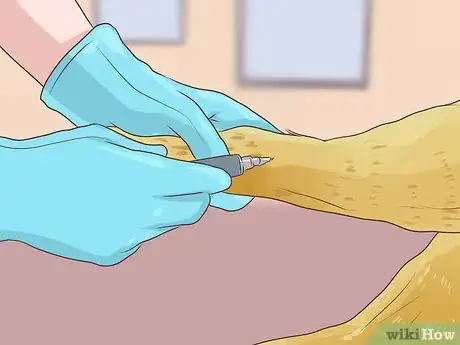
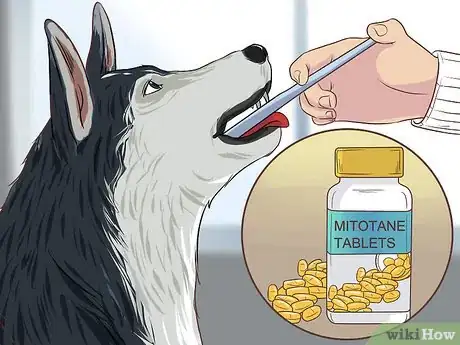
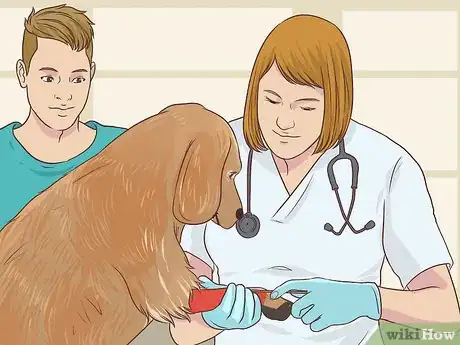
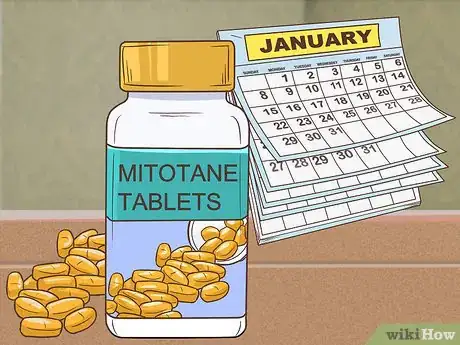
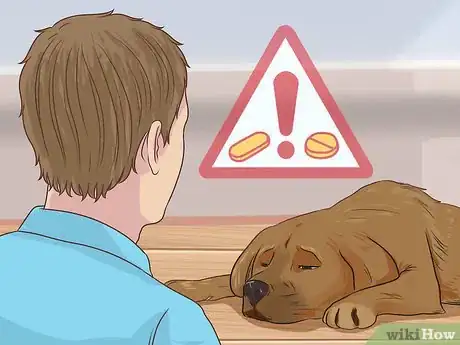
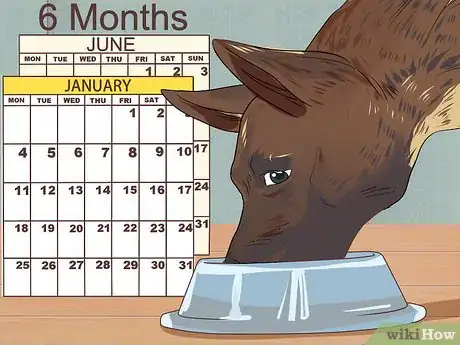
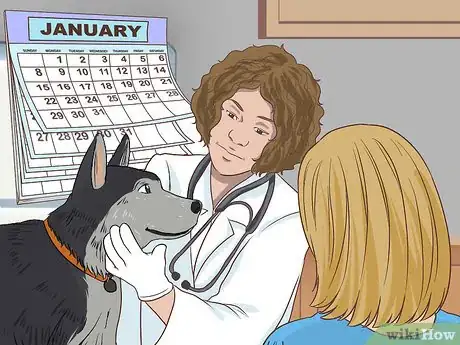
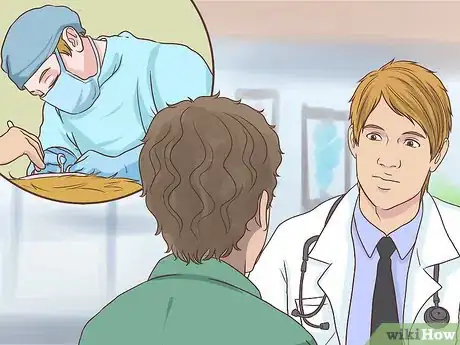
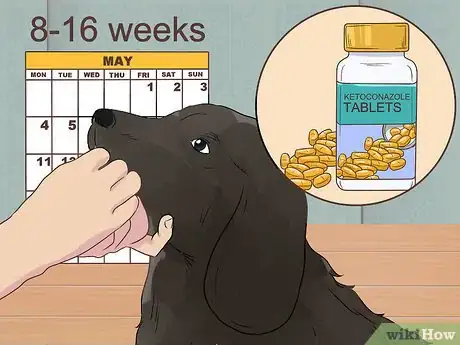

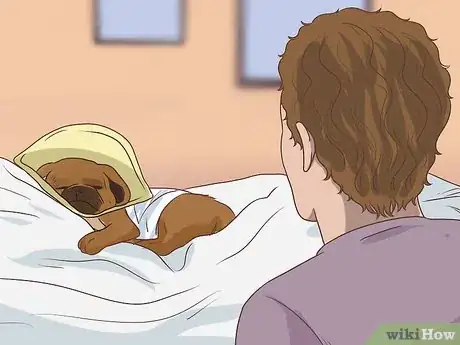


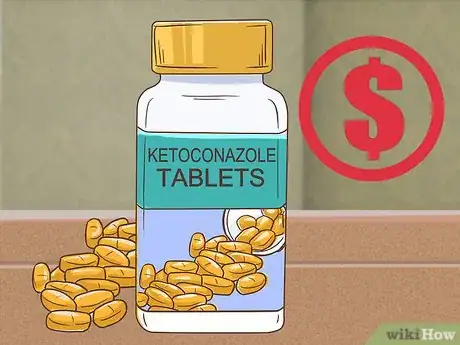




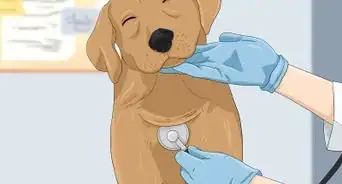

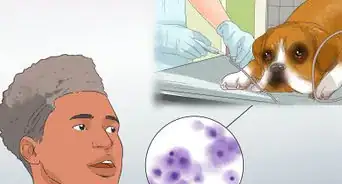
















































Medical Disclaimer
The content of this article is not intended to be a substitute for professional medical advice, examination, diagnosis, or treatment. You should always contact your doctor or other qualified healthcare professional before starting, changing, or stopping any kind of health treatment.
Read More...